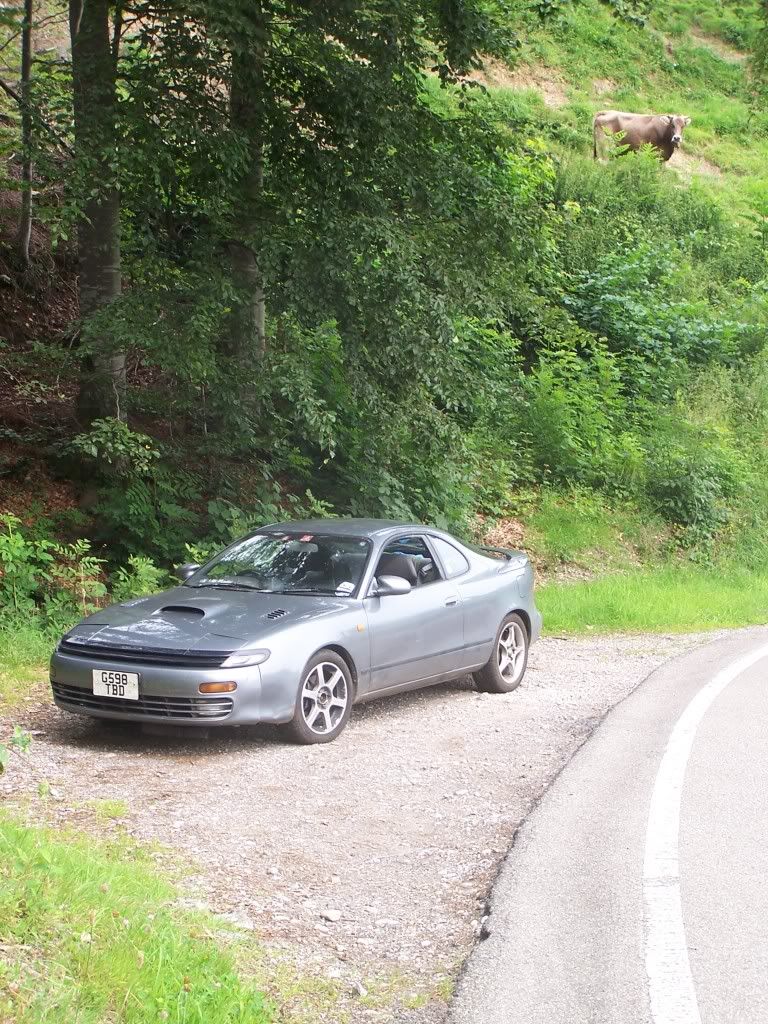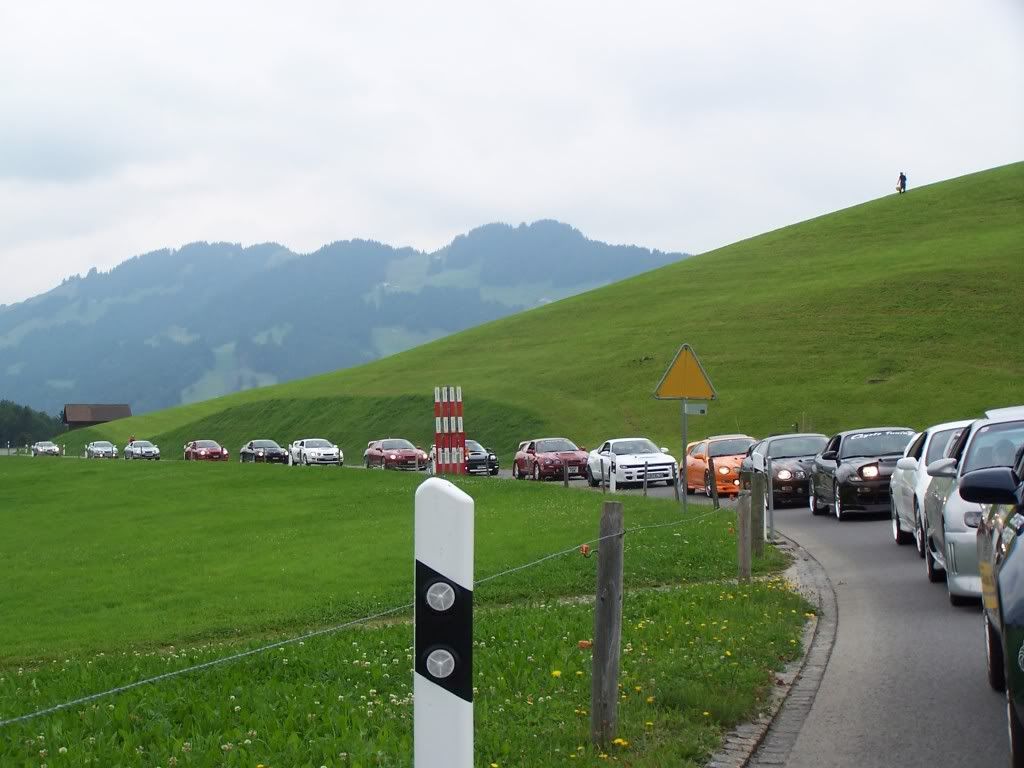-
Posts
4,370 -
Joined
-
Last visited
-
Days Won
109
Content Type
Profiles
Forums
Events
Gallery
Store
Collections
Posts posted by _Chris_
-
-
140K isn't a huge milage for a big engined car. I know one GT4 that's done 250K, and it hasn't been grannied about. I'm even up past 180K on my small engined clio and it was thrashed (by me) for the first 140K miles, including being 'run in' down the autobahns at over 100
If the worst comes to the worst and the engine lets go, a secondhand engine doesn't cost a fortune. IMO it's the bodywork that should determine when it's time to break.
-
Head gasket is very rare on a 205. If the car's not going out on the road I'd hazzard a guess the exhaust is full of water which boils off as steam.
The other thing that causes white-ish smoke is turbo oil seals on the exhaust side. Does the smoke smell of oil ? or rich mixture ? or steam ?
I wouldn't start pulling it to bits until you've at least done the rad and started driving it to see if symptoms persist. It's quite common for GT4's to issue clouds of white or grey smoke when started cold and left idling for long periods.
-
Does the starter just click, or does it turn but very slow ?
Do the dash lights go very dim when trying to start, or do they stay bright ? If they go very dim then battery voltage is dropping badly so bad battery or jammed motor (as below)
Alternators are able to supply far more current than headlights draw. They will not stop it charging.
A few possibilities:
Contacts on starter solenoid worn so it needs a good kick to make contact and turn starter. A battery that's stood is normally about 12 - 12.5V a running engine is about 14 so jump leads will give it a little extra.
Starter motor has a worn bearing causing motor to rub on stator when side load applied, thereby drawing more current.
Battery is indeed knackered, although it's very rare that they are unable to re-start a car immediately after switching off.
Out of interest, did your battery work in Daves car ?
Another possibility is a poor connection on power lead from battery to starter or especially earth lead from battery to engine. If you connected the jump lead - to engine rather than battery would have made all the difference.
-
Any chance of the vid pretty please ?
-
If you've already driven on the tyre flat, it'll be shot.
If you can get air to stay in for 2 mins, you've got nothing to worry about. If it's flat, youll probably get away with a mile or 2 as long as you don't hit any potholes or big stones, and as long as the tyre stays between rim & road. If you hear any metalic scraping noise, that'll be the rim on the tarmac which will scuff it in no time.
-
Theres a guy on GT4OC who is building a Corolla 4wd 3SGTE with an amazing spec but his filter is in front of the n/s front wheel arch! He must be a very skilled fella to of pulled off what hes doing but i dare not ask him about water near the filter just incase he has a breakdown

I tend to err on the side of warning people about potential major issues. Doesn't seem to win me many friends though.
I one hydrauliced a standard pug 106 in about a 5 inch deep puddle. Over a humpback bridge and hit it at about 30MPH. The air intake was above the radiator so the front valance & rad acted as a huge scoop. Once I'd loosened the injectors & let the water out it fired up and got 2 miles back to my office on 3 cylinders. When I looked closer, there were 2 holes in the block from the same conrod.
-
The other common thing is for people to duct cold air up from the bottom of the front grill up over the filter. Recipe for disaster.
-
It didn't have a non standard crank pulley did it ?
-
As above, report to plod and press for a prosecution. I know someone who was caught and received 3 points + fine.
http://www.nopenaltypoints.co.uk/legal-rules-involved-traffic-accident.html
Punishments for Leaving or Failing to Report a Road Traffic Accident
As two of the more serious road traffic offences there are severe punishments involved if the driver is found guilty. Failure to stop at the scene of an accident and failure to report an accident can both result in driving disqualifications. Both of these offences can result in the driver having up to 10 penalty points applied to his or her licence. A fine of up to £5000 can also be applied. Drivers found guilty of either of these traffic offences can also be sentenced to up to six months in prison, although this is rare.
-
In theory - driving a car on the road with faults is an offence, driving knowing it has faults is a bigger offence - that's RTA offence, not insurance of course. The mitigating part is that most MOT failures do not present an immediate danger, those that do have a separate section filled in by the tester to say the vehicle should not be driven (I've had it done in the past). They are at liberty to call the police if the customer ignores the warning.
MOT's are intended to pick up the early signs of wear or degradation so they are dealt with before they become dangerous, e.g. a set of brake pads with a couple of mm left will fail, even though they are still working fine and will do so for a few weeks.
As far as insurance not honouring a claim, I think they would need to show that the 'fault' which failed the MOT was a contributing factor. No one could argue that a small rust hole in a sill caused the driver to fail to brake in time and run into the back of another car. With most insurance companies though, I suspect they would refuse to pay and the onus would be on the policyholder to fight through the courts.
-
I've also heard of problems with magnecor.
You can test the resistance of the leads with a multimeter, as avove. Normally when they 'go' it's the result of a break which makes the spark jump an extra gap. What it won't show is if you have leakage through the insulation to nearby metal. You will see this if you lift the bonnet with the engine running as sparks from the leads.
When you re-fit the rotor arm, use loctite (medium strength - nutlock or in my case I use 290 for everything as you can apply it after assembly and it soaks in.). Rotor arms coming loose are quite common.
-
I was about to post that I've seen worse, but then I saw the pic of the back end.
-
Disconnect battery, or make sure it's kept charged. If it's left connected it will go flat which will destroy it.
Otherwise, as above.
-
http://en.wikipedia....rmal_expansion.
I can speak from personal experience what happens when you seal the water system. A friend of mine bought a header tank system which had a fully sealing cap. Because he'd bought it, he didn't believe me when I told him it needed a pressure relief / equalisiation system. I was proved right the first time he drove the car hard and burst the new radiator he'd just fitted.
You could leave the expansion overflow open, but you will find the water level will always be low.
-
The power figures I quoted were the 'as standard' power figures.
Nothing fundamental mechanically why a rev 2 wouldn't push out as much power as a rev 3 given the same turbo, injectors & ecu. By the time you've carried out the upgrades required (metal HG, turbo, injectors) it will probably cost as much as the rev 3 anyway.
-
Rev 3 has the following changes/upgrades (off the top of my head):
Metal head gasket instead of the paper one which blows above standard boost. (can fit a standard rev 3 HG to a rev 2 as an upgrade)
Re-designed head with TVIS removed, slightly smaller ports to compensate and cams to restore the top end. Manifolds are different and not inter-compatible (can't fit rev3 manifolds on rev 2 head, but you can fit a rev 3 head complete)
Re-designed oil pump & sump to put filter on bottom rather than next to hot downpipe.
Slightly different water flow setup. Needs some thought to be able to run rev3 head with rev 2 engine.
Bigger turbo to run higher boost to higher revs.
Bigger 540cc injectors (rev 2 are 440)
On GT4 the rev 3 has water intercooler, rev 2 has a rubbish top mount air-air unless you get the CS or RC version. If fitting to another car probably easiest to go front mount anyway.
Rev 3 ECU uses map sensor setup. Rev 2 uses AFM and fuel control is less accurate and tends to run very rich.
Wiring loom is completely different between rev 3 & rev 2. If fitting to a rev 3, use the rev 3 wiring loom. The rev 2 sensors are compatible but many have different plugs so you'll need to cut these from a rev 2 loom & splice in.
In a GT4, I think standard power outputs are rev 2 200BHP CS/RC rev 2 220BHP rev 3 250-270BHP. The main gains on rev 3 being turbo & higher boost plus better fueling.
-
What was the cause of the break downs? I have had many break downs in nearly 50yrs of driving but never one in seven toyotas (four celicas)
Mine was actually in a clio (GT4's both out of MOT) and a spring came adrift from the clutch plate and wedged so no declutching. I still drove it but avoided towns / hill starts. The GT4 185RC had an ECU failure which prevented it starting when warm, and the ST205 had a burst radiator as a result of no pressure relief cap on the header tank (I did warn him
 ). He stopped for fuel and we carried on as we couldn't stop, then he caught us up just as we stopped to look for the campsite and his car promptly disappeared in a cloud of steam. It was like a scene from a top gear challenge.
). He stopped for fuel and we carried on as we couldn't stop, then he caught us up just as we stopped to look for the campsite and his car promptly disappeared in a cloud of steam. It was like a scene from a top gear challenge.We arrived at the campsite, me unable to stop untill we reached the pitch at the top of the hill, the 185 (unable to start) towed by the 205(no rad).

A couple of phone calls later and the next day we received a spare ECU from a friend and a new rad & forlife from TCB. Excellent service as always.
To be fair, my st205 is very reliable and does a lot of miles every year, but then it is standard. The Clio is, however, the only car I own which has never come home on a recovery wagon in over 170K miles.
-
A group of us from the DC went down to the international meet in Switzerland in 09. One hell of an experience.
http://s256.photobucket.com/albums/hh192/chris-der-bear/celica/swiss09/
GT4's really do turn heads




I won't mention the group of us that went to the lake district earlier this year. All 3 cars broke down on the way up.
-
Only get tracking checked if the front tyres have worn more on 1 edge (If you drive hard the tyre will normally wear more on the outer edge anyway).
Tyre places don't have a vested interest in your tracking being accurate !!!!!
As for balance, no NEED to but if you don't you will very likely have wheel wobble at speed which will be uncomfortable and cause rapid wear in steering & suspension joints. It's the tyre that is unbalanced, not the wheel.
-
As long as you keep them charged and don't run them flat then 5 years is the normally quoted figure.
-
I use Easycad for the odd mechanical doodles I do. Imports/Exports from DXF can go a bit astray with text & dimensions though.
I notice they do a free 14day demo download. May have saving disabled but worth a try.
-
LPG isn't such a saving on short runs as the first part of the trip is on petrol until the engine warms up enough for the evaporator not to freeze.
You'll never beat a diesel for stop/start driving. My small diesels (pug206 or clio) give over 50MPG whether it's motorway or town stuff. Modern diesels aren't like the old slow unresponsive stereotype, they are generally smoother, more responsive and more powerful than the petrol equivalent.
For me, the small diesels are for ecconomical round town use and the 4's are for fun and long distance (my 205 is LPG).
-
Torx as above or mole grips on the outside.
-
The rattle is only when on throttle, and a brief rattle on cold start
Possibly big ends or piston slap, but could be other things. If you get loud rattle for a couple of seconds on cold start before oil pressure gets up I'd say big ends. Did the engine get run short of oil ?



Dont know whether to do track or not
in General Celica Discussion
Posted
I would advise going on track at Rallyday instead. Similar cost, better class of driver on the whole. Much more interesting show too.